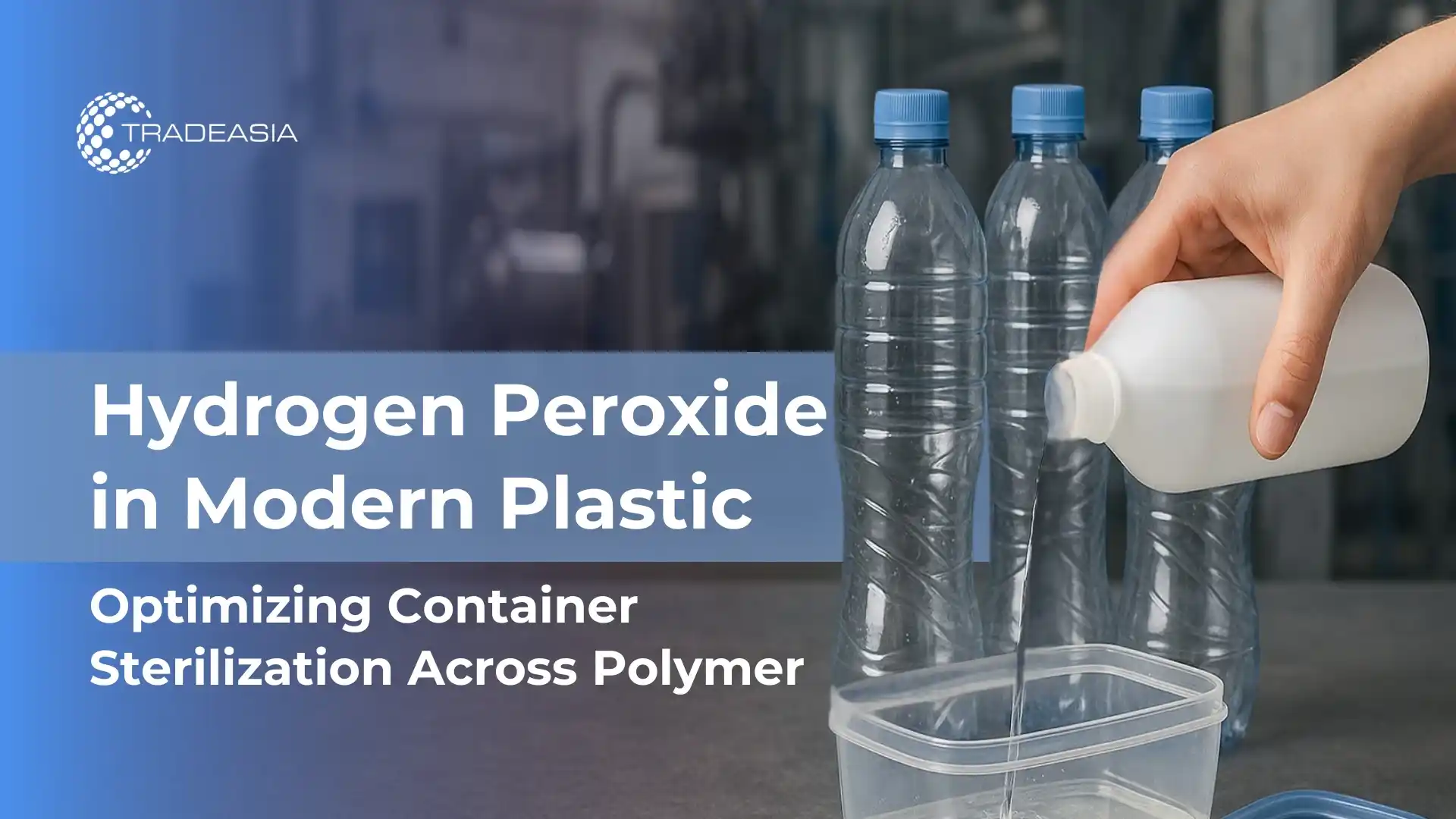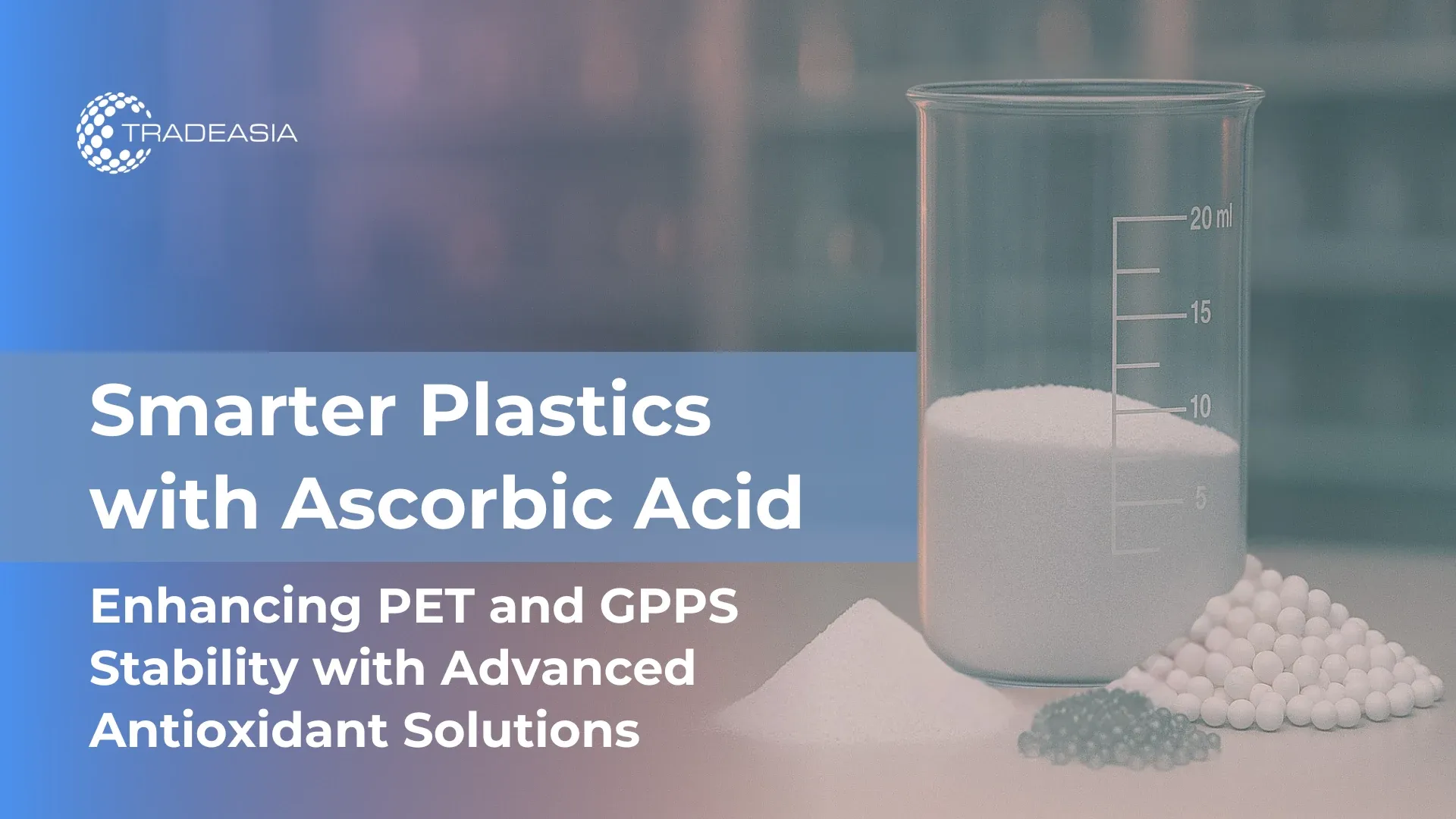1. Introduction: Why Hydrogen Peroxide Matters in Modern Plastics
Hydrogen peroxide, widely known as H₂O₂, is more than a bleaching or disinfectant chemical. In the plastics industry, it plays a unique and growing role in enhancing polymer quality, surface cleanliness, and product safety. Its ability to function as an oxidizing agent makes it ideal for high-precision plastic applications such as packaging, medical devices, and optical-grade components. As global manufacturing shifts to cleaner and more efficient processes, H₂O₂ is becoming indispensable for modern polymer engineering.
Plastics such as PET, polypropylene, and polyethylene often require surface activation or sterilization steps during processing. Hydrogen peroxide offers a powerful yet residue-free method to achieve these outcomes. Its decomposition into water and oxygen makes it safe for polymer contact, unlike many organic peroxides that leave unwanted by-products. This advantage provides manufacturers with cleaner processing pathways.
Additionally, hydrogen peroxide has been studied for its ability to improve the recyclability of PET by removing contaminants and reducing yellowness during mechanical recycling. Insights from industry journals highlight its effectiveness in decontamination and optical restoration (ScienceDirect – Hydrogen Peroxide in Polymer Processing). These applications reinforce H₂O₂’s growing relevance in sustainability-driven plastic systems.
For customers exploring PET resin solutions and technical materials, Plastradeasia provides a diverse portfolio of plastic-grade feedstocks, including PET resins through the resource page here: PET product page.
2. Role of Hydrogen Peroxide (H₂O₂) in Polymer Processing
Hydrogen peroxide contributes to polymer processing primarily through surface treatment, oxidation control, and sterilization. Its high reactivity with organic substrates allows it to remove surface contaminants on PET and olefinic polymers, preparing them for printing, bonding, or coating. This is especially valuable for food packaging materials where adhesion quality directly affects product performance.
In extrusion and thermoforming lines, H₂O₂ also turns up as a cleaning agent to remove degraded polymer residues inside machinery. Since residue buildup can affect melt flow and cause black specks, hydrogen peroxide’s oxidizing ability helps maintain smooth production. This directly improves quality control, especially in polypropylene (PP) thermoforming applications where clarity and uniformity are essential.
Hydrogen peroxide’s popularity in the plastic packaging sector is driven by its use in aseptic sterilization. In PET bottle manufacturing for dairy, juice, and pharmaceutical beverages, H₂O₂ is used to sterilize preforms or bottles before filling. Because it decomposes into harmless water and oxygen, it meets strict hygiene standards and avoids chemical contamination risks.
If you are working with polypropylene applications, Plastradeasia’s PP product categories offer guidance and supply options: Polypropylene category product list.
3. Hydrogen Peroxide & PET: Enhancing Clarity and Stability
PET is highly favored for its transparency and strength, but the material is sensitive to surface contamination and microbial growth. Hydrogen peroxide enables cold and hot sterilization of PET bottles, improving their suitability for food and beverage industries. Many bottling lines rely on vapor-phase hydrogen peroxide (VPHP) systems to eliminate pathogens while maintaining the polymer’s structural integrity.
Beyond sterilization, hydrogen peroxide also supports PET recycling by helping remove organic dyes and reducing discoloration. Studies show that controlled H₂O₂ treatment can restore PET flakes to near-virgin clarity (ResearchGate – PET Decontamination using H₂O₂). Recyclers adopt this method to enhance the economic value of processed resin, particularly for food-grade rPET.
Furthermore, hydrogen peroxide can assist in breaking down residual acetaldehyde, an impurity that affects PET taste and odor performance. This is vital for beverage-grade PET where sensory properties directly influence brand reputation. Manufacturers adopting H₂O₂ treatment benefit from cleaner, purer PET output.
For PET buyers seeking resin supply and technical support, refer to Plastradeasia’s PET listing: PET product page.
4. Hydrogen Peroxide Function in Polypropylene (PP) Applications
Polypropylene is widely used in thermoforming, automotive parts, film packaging, and household goods. In PP applications, hydrogen peroxide is used primarily for surface activation. PP’s low surface energy makes printing and coating difficult, but H₂O₂ oxidation creates functional groups that improve adhesion without damaging the polymer.
In thermoforming applications, hydrogen peroxide also helps maintain cleaner molds and prevents carbonized deposits from affecting surface finish. This is crucial for PP grades used in food packaging and consumer goods, where appearance and cleanliness matter. Clean molds also reduce downtime, improving overall production efficiency.
Hydrogen peroxide may be used in decontamination processes of PP recyclates to achieve higher purity levels. As global brands push recycled PP content in packaging, H₂O₂ becomes a valuable tool for enhancing both hygiene and aesthetics. According to polymers research archives, peroxide-based washing significantly improves PP recyclability by breaking down organic residues.
For PP thermoforming grades, Plastradeasia supplies HE20TF PP Homopolymer suitable for various packaging needs: PP Homopolymer product page.
5. Benefits of Hydrogen Peroxide for Polyethylene (PE) Processing
Polyethylene, whether LDPE, LLDPE, or HDPE, is used across films, containers, pipes, and industrial packaging. Hydrogen peroxide enhances PE processing by enabling pre-treatment steps that improve paint, adhesive, and printing compatibility. Its oxidizing action forms functional groups that promote stronger bonding between the polyethylene surface and coatings.
In PE recycling, hydrogen peroxide is used to break down odor-causing organic contaminants. This improves the quality of recycled polyethylene, making it suitable for high-value applications where odor control is essential. The ability of H₂O₂ to oxidize tough residues makes it a preferred choice among recycling companies aiming for higher-grade recycled material.
Hydrogen peroxide is also used in the sterilization of HDPE bottles for pharmaceuticals, cosmetics, and personal care products. Its decomposition into non-toxic by-products ensures safety compliance while providing strong microbial control. This sterilization process supports industries requiring aseptic packaging.
For polyethylene applications and technical resources, visit Plastradeasia’s application directory: PET Application page.
6. Industrial Applications and Market Trends in Asia
Asia’s plastics industry, particularly in Indonesia, India, and Southeast Asia, is seeing rapid adoption of hydrogen peroxide due to rising regulatory focus on hygiene, sustainability, and product safety. The packaging sector remains the largest consumer of H₂O₂-based sterilization systems due to strong demand for aseptic PET and PP packaging.
Hydrogen peroxide is also gaining ground in recycling technologies. With governments pushing for circular economy compliance, recyclers increasingly use H₂O₂ to decontaminate polymers such as PET and PP. This helps create higher-quality recyclates suitable for food-contact or export markets.
OEMs and manufacturing plants use hydrogen peroxide cleaning systems to maintain extrusion lines, improving uptime and reducing maintenance costs. H₂O₂’s low corrosion and residue profile makes it ideal for polymer machines compared with harsh chemicals.
To request supply partnership or product information, you can reach Plastradeasia’s commercial support team: Contact Us here.
7. Sustainable Plastics Manufacturing with Hydrogen Peroxide
Manufacturers aiming for greener polymer production often select hydrogen peroxide due to its eco-friendly decomposition pathway. The absence of toxic by-products positions H₂O₂ as a clean-processing additive, aligning with global sustainability standards such as EU REACH and FDA compliance.
Hydrogen peroxide also aids plastic recycling efforts. PET and PP recyclers increasingly adopt H₂O₂ washing systems to produce cleaner recycled flakes with lower odor and better color. This supports closed-loop systems where recycled plastic must meet stringent quality demands.
In the packaging sector, the use of H₂O₂ for aseptic sterilization reduces reliance on heat-based sterilization, lowering energy consumption. This is beneficial for companies pursuing carbon reduction targets in their manufacturing operations.
For safety data sheets, TDS, and regulatory documentation, refer to the Plastradeasia download center: Technical Document page.
8. Conclusion: The Future Role of H₂O₂ in Plastic Innovation
Hydrogen peroxide is increasingly recognized as a versatile and sustainable solution for PET, polypropylene, and polyethylene industry segments. Its applications—from sterilization and surface activation to recycling enhancement—demonstrate its important role in modern polymer systems.
As the plastic industry shifts toward cleaner, more efficient, and more recyclable systems, hydrogen peroxide stands out as a practical tool to achieve these objectives. Its compatibility with major resins and its environmentally friendly profile make it a preferred choice for manufacturers seeking improved performance and compliance.
Plastradeasia continues supporting global plastic producers with high-quality polymers and additive solutions tailored for industrial needs. For inquiries, sourcing support, or technical assistance, you may contact the team anytime: Contact Us here.




Leave a Comment